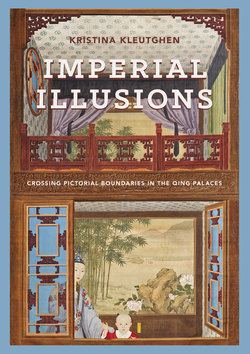Читать книгу Imperial Illusions - Kristina Kleutghen - Страница 15
На сайте Литреса книга снята с продажи.
ОглавлениеI.2Anonymous (attributed to Giuseppe Castiglione and Jin Tingbiao), Spring’s Peaceful Message, mid-
eighteenth century. Scenic illusion affixed hanging, ink and color on silk, 201 × 207 cm. Palace Museum,
Beijing.
and Western painters serving the emperor.2 These artists blended their different styles and techniques to create monumental illusionistic paintings such as this one, known as Spring’s Peaceful Message (Ping’an chunxin tu or Meibao chunxin tu), that seemed at first glance to be real, permeable spaces contiguous with the viewer’s own space and occupied by real figures and objects.3
The Yongzheng emperor (r. 1723–35) commissioned the first scenic illusions in the late 1720s,4 and Qianlong continued this practice from 1736, his first official year on the throne, to 1798, when he commissioned his last scenic illusion just over a year before his death.5 The palace workshop archives demonstrate that originally dozens—perhaps even hundreds—of these paintings were installed inside imperial spaces in and around
